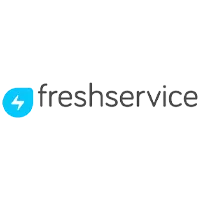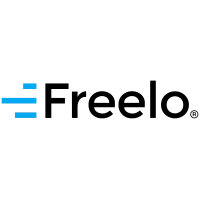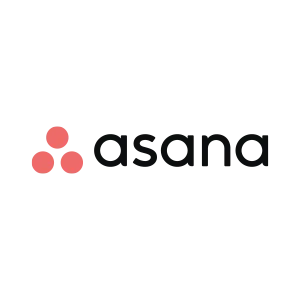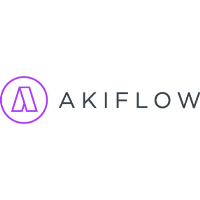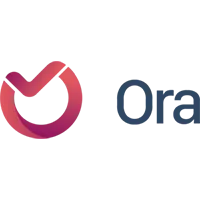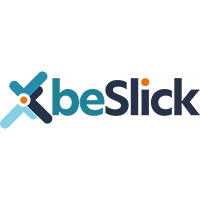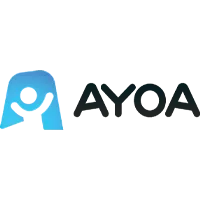
Best Task Management Software
What is Task Management Software?
Task management software facilitates teams to manage individual tasks and organize a user’s daily workflow. It accomplishes this by generating to-do task lists with start and end dates, task components, task categorization, and individual task separation.
People use task management software often to keep track of their progress, which is separate from the progress of the whole team or project. People can use these products in almost any field to track daily, weekly, and monthly tasks. Users can create, update, and change the jobs given to them. Administrators use this software to give out assignments and track how they are done.
Task management software is similar to project management software, but the scale and scope of the two differ. Using a project management tool, users can manage a team of people, balance projects, and look at how productive they are.
Task management software lists each person’s work, breaks a project into its parts, sets due dates, and lets people manage themselves.
A product must meet the following criteria to be classified as a task management tool:
- Make separate tasks and give them to employees based on what they do.
- Manage how tasks depend on each other based on rules already set.
- Set start and end dates, which can be changed by hand or computer.
- Let employees handle their tasks and report on how they’re doing.
- Change task statuses like “open,” “closed,” “pending,” and “on hold.”
- Focus on single tasks and working together, not whole projects.
Compare Task Management Software
Freshservice
Table of Contents
What Is Task Management Software Used For?
Do you waste a lot of time organizing sticky notes, looking for emails, and figuring out which jobs must be done first and which can wait? Does your team need to finish assignments on time all the time? If so, you should use an intelligent task management system to make tasks (and subtasks) and assign them all in one place.
- This software allows for scalability and flexibility in constructing and modifying their project process to meet the business’s and the market’s needs.
- It aids in centralizing work activity, reducing the danger of data loss, and increasing job efficiency.
- It promotes teamwork and enables continuous communication, resulting in increased overall production.
- Tasks can be readily prioritized based on business requirements. Also, reminders can be established to ensure tasks get completed on time.
- Tasks and events are controlled daily from anywhere in the world and at any time; the only requirement is an internet connection.
Why Use Task Management Software?
Task management software may significantly boost your company’s productivity. Workers who can see their daily duties within a project hub may remain on track with their work and take control of deadlines.
Assignment management software saves employees time by connecting all essential papers and files to each assignment, eliminating the need for workers to hunt for them.
Task apps may save a ton of time and keep staff members satisfied. Task managers may more accurately determine how much work employees can do by looking at how long specific activities take. They may divide up the labor among the employees fairly, preventing overwork and ensuring that each employee only accepts tasks they can handle.
Main Benefits Of Task Management Software
If project management software represents the forest, task management software represents the individual trees. Using this system to keep all team members, teams, and departments on the same page is advantageous for all enterprises.
Here are the most important advantages of using this platform:
- Centrally located: It is much simpler for team members to collaborate and managers to keep track of the status of projects when all tasks for each project are held on different boards or charts, along with documents and files.
- Simple to use: Because most task management software is SaaS, you should be able to access the data and files from any computer with an internet connection. Working via a browser, an installed program on a PC, or an app on your phone or tablet will be possible.
- Multiple views: From a Gantt chart and a schedule to a calendar and a Kanban board, task management software gives you different ways to look at your work.
- Boost productivity: Productivity gains: Workflow automation can lessen the number of repetitive tasks that team members or managers must complete every day or every week.
- Increases collaboration: Task management software and time management tools makes it easier for teams to collaborate on identical subtasks or tasks and the overall project.
- Simple delegation: When you utilize task-tracking apps, you may reduce the number of emails and touch points with team members to assign work. Create the assignment in your program and assign it to the relevant team member, complete with deadlines and notes.
- Optimized process management: A task management tool lets businesses look at the whole lifecycle of a project to find bottlenecks and activities that take a lot of time and need special attention. This helps managers decide which tasks are most important and when to do them. It also helps them plan the general strategy for a project in a manner that makes it easy to do.
- Break down large tasks: By allowing subtasks, specific task management software makes allocating work among team members simple. This ensures that no one is overburdened with work and that tasks are completed more quickly.
Key Features of Task Management Software
Several options are included in task management software that you may use to maximize the effectiveness of your tasks and projects. Before choosing a task and time-tracking solution for your business, consider your needs and the characteristics that some apps prioritize over others.
- Task Creation and Assignment: The task creation and assignment features enable users to construct task lists with information and due dates for particular users. This is the primary role of the task management app since it assists businesses in meeting deadlines, creating to-do lists, and assigning priority levels to specific activities.
- Email Notifications: Because task management software can become cluttered with many tasks, employees can overlook specific tasks buried beneath others. Consequently, this software consists of email notification features that remind you at the start of each day. This notifies you about tasks that must be done as a priority and those that must be completed by the day’s end.
- Portfolio Management: Software for managing tasks often has features that help with budgeting and coordinating a portfolio. Portfolio coordination lets users organize, rate, and score projects to better understand how your business is doing and what it’s working on. This makes it easy for companies to keep track of their goals and metrics. Portfolio budgeting lets users divide their budgets between departments and projects and control how much of their budget goes to each project.
- Collaborative Project Planning: This platform lets different people work together to plan and carry out a project. This feature has a section for comments where users can share their ideas and make it easier for everyone to talk about certain projects. Users can also use an upload feature to add media, link it to projects or tasks, talk about it, and add notes.
- Kanban Boards: A project management tool that helps users map out the whole project. This is done with the help of task management software. A Kanban board is a chart that shows how different parts of a project depend on each other. This makes it easier for users to see how far along they are in a project, which makes it more likely that they will finish it.
- Baselining and Key Performance Indicators (KPIs): This tool lets users set and track KPIs in the software. Users can keep track of key performance indicators or baseline assessments throughout the lifecycle of a project or across multiple projects with this feature. Key performance indicators make sure that the tasks being given are making the company as a whole more successful.
- Resource Management: This feature helps with time tracking and monitoring assets for completing tasks. With this feature, users can keep a database of resources with information about employment, skills, and availability. This makes it easier to see how team members can be used to get certain tasks done.
Users can also track resource workloads and monitor how much work is being done by each resource. This lets you make the best use of your employees’ time.
Resource management also has a time tracking feature where users can see how much time they plan to spend on a task versus how much time they spend on it. They can also find global or specific hourly rates for contract work or the value of internal person-hours.
- Mobile Access: To manage tasks and projects while on the go, mobile access provides a mobile-friendly mobile app or website. This makes it easier for workers to stay on top of their tasks while traveling or commuting to work without a computer. A great way to be aware of the amount of work you have to do within a project is to be able to see your tasks while you are working on them.
How To Choose The Right Task Management Software?
After careful consideration, we have determined that below are some most important things to consider when selecting the best task management software for your business:
Ease of Use: The purpose of project management systems is to make otherwise complex tasks simple. It will only help if the software is easy to use. For instance, an intuitive user interface (dashboard) would have a layout and navigational cues that encourage typical human reactions.
Industry Type: Depending on the industry, a company should select either software that best utilizes an agile development approach or an industry-specific solution that meets the company’s particular requirements.
Collaboration: Look for job management software that makes it easy for groups to share files. The software should be able to access information on mobile devices like smartphones and computers and share information about different software packages.
The chat function also lets people give and get feedback right away. This is helpful when more than one person needs to work on the same or a few chores.
Options for Delivery: Businesses should determine which delivery method (on-site or in the cloud) will work best. Businesses will have to pay for specific hardware to use on-site software. But businesses will be the only ones in charge of managing all operations. On the other hand, cloud-based solutions give you very little power.
What’s the difference between managing tasks and managing projects?
Many jobs in a project need to be organized and managed well. Knowing when to use job or project management to reach your goals is important. Understanding these differences will help you make a good plan for each job so you can meet your goals and be successful.
How much does software help manage tasks cost?
Costs for task management software vary based on the plan level you want and the size of your business. The average cost of work management software is between $9.68 and $18.63 per user per month (billed annually). This average doesn’t include enterprise-level deals, which usually have to be quoted individually and can be much more expensive.
The best task management software has free plans that cost nothing but have limited functions or users. On the other hand, some work management software has minimum user requirements. So even if the price of a plan is low, say $10 per user per month, if there is a minimum of three users, it will cost you $30 per month.
What Kind Of Users Can Use A Task Management System?
Project managers and task managers — Any task manager who works within a team will benefit from this task app. He can create and assign tasks, set reminders, define due dates, or prioritize tasks using the software. Project managers will employ this platform to break and divide lengthy projects into daily and weekly tasks. Employees can better manage project work thanks to this.
Team managers – Team managers can gather data from each task and determine how much time and resources are required to finish each activity. Using the data, they can regularly improve their employees’ overall productivity.
Employees — Using task tracking and handling software will benefit all team members. Visualizing your daily duties and ensuring you stay on track, whether in engineering or sales, is helpful. The software allows team members to work together on certain projects, which can assist in removing any obstacles standing in the way of workers finishing a task.
Potential Issues With The Task Management Software
Micromanagement: Task managers may designate objectives that cause employees to focus excessively on specific areas. This can cause teams to forget other purposes and prevent them from shifting priorities mid-task.
Not Setting Good Goals: The main job of a task manager is to assign jobs. Still, they might have to give out jobs just for the sake of it. This can ensure task managers refrain from setting goals that directly add to KPIs and the company’s overall success. The best way for task managers to solve this problem is to meet regularly with people in management roles who know which tasks are the most important to finish.
Trends Related To Task Management Software
Agile task management
Recently, many businesses have set numerous smaller, more manageable long-term goals instead of a few large ones. Task managers will assign various jobs to be finished throughout sprints of two weeks.
This approach to task management, known as agile task management, enables speedy project turnaround. This ultimately boosts output because employees are more likely to concentrate on a particular assignment for two weeks instead of months.
AI and Project Management
AI is quickly becoming the norm in project management. The time taken by the tool to complete a job or task can be calculated by artificial intelligence. It helps assess which employees must catch up because it reveals their efficiency and shortcomings in particular activities.
Other Software Related To Task Management Software
-
Project Management Software
Project management software helps workers, managers, and teams keep track of long-term projects and team goals. Task management software is similar to a project management system in that it lists each person’s work, breaks down a project into its parts, sets due dates, and lets people handle themselves. When these two software options are used together, all teams at a company have a better place to work.
-
Time monitoring software
It is also known as a time management tool that enables employees to track the time spent on assignments, multiple projects, and other deliverables either passively or actively.
Time tracking and monitoring software increase employee productivity by fostering responsibility, identifying time-wasting behaviors and events, and centralizing all time-related information. It is logical to incorporate time-tracking software with task management software, so staff members can view all relevant data in one place.
-
Business Process Management Software
Business process management (BPM) software helps describe, automate, and report on processes to make it easier for a business to reach its goals. This works well with task management software because it clearly outlines the steps a company needs to take to achieve its general objectives. This helps companies control their workflow and make their business processes run more smoothly.
